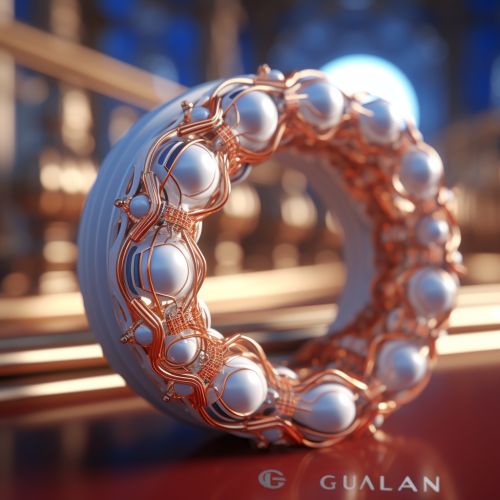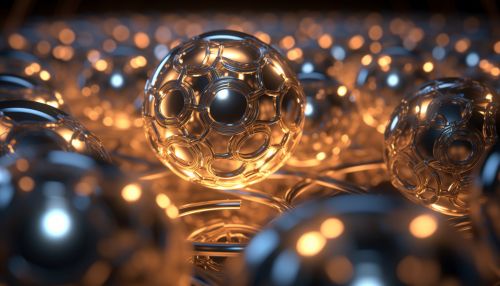Gluon
Introduction
Gluons are elementary particles that mediate the strong force between quarks, the fundamental constituents of protons and neutrons. They are the carrier particles for the color force, which is responsible for holding quarks together within hadrons. Gluons themselves carry the color charge, making them unique among the gauge bosons.


Properties
Gluons are massless and have a spin of 1, making them bosons. They are always in motion and can be found inside protons, neutrons, and other hadrons. Unlike other force carrier particles, gluons can interact with each other due to their color charge. This self-interaction is a key feature of the strong force and is responsible for its strength and short range.
Color Charge
The color charge of gluons is a quantum property that is analogous to electric charge in electromagnetic interactions. However, unlike electric charge, color charge comes in three types, often referred to as red, green, and blue. Each quark carries a color charge, and combinations of quarks must form a color-neutral (white) state. Gluons carry a combination of color and anti-color charge, allowing them to mediate the color force between quarks.
Quantum Chromodynamics
Quantum chromodynamics (QCD) is the theory that describes the strong interaction between quarks and gluons. It is a component of the standard model of particle physics. QCD predicts that the force between quarks does not diminish as they are separated, a phenomenon known as confinement. This is why quarks are never found in isolation.
Gluon Field
The gluon field is the quantum field associated with gluons. It is a key concept in QCD and is responsible for the behavior of quarks and gluons. Changes in the gluon field correspond to the creation or annihilation of gluons. The energy of the gluon field contributes to the mass of hadrons, according to Einstein's mass-energy equivalence principle.
Experimental Evidence
The existence of gluons was first indirectly observed in the 1970s through deep inelastic scattering experiments. Direct evidence for gluons came from three-jet events in electron-positron annihilation observed at the PETRA collider in 1979. These experiments confirmed the predictions of QCD and established gluons as the mediators of the strong force.
